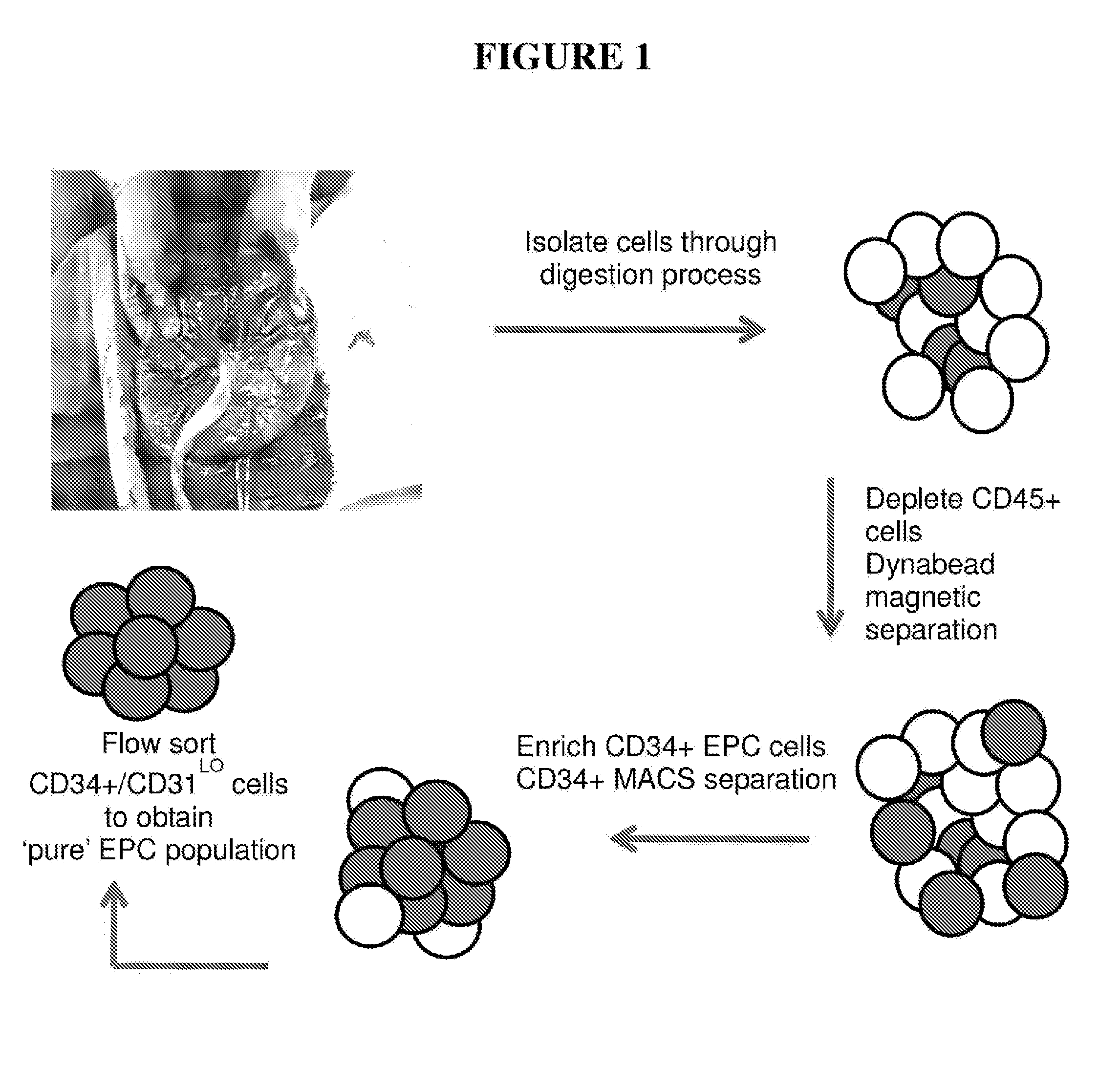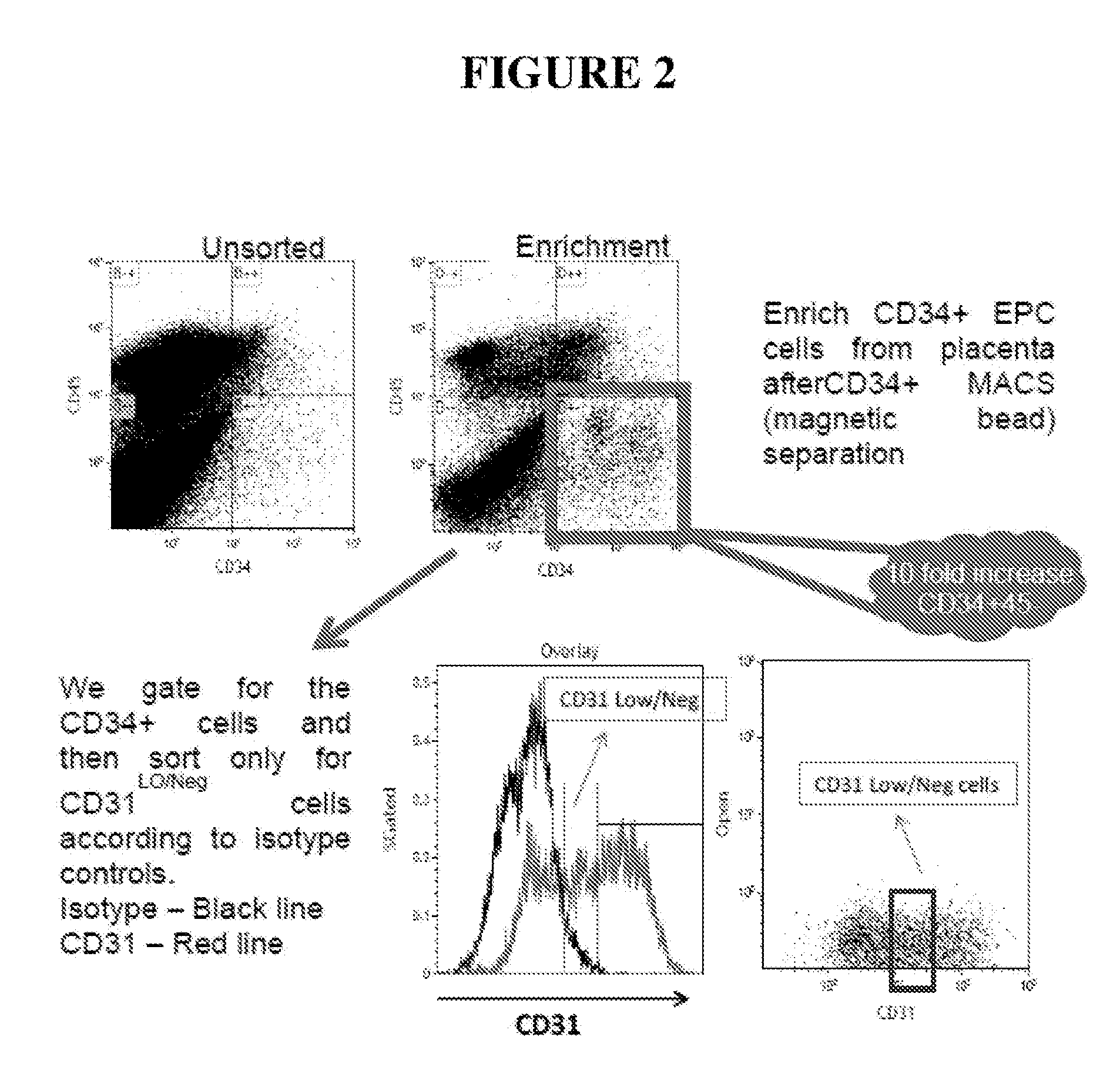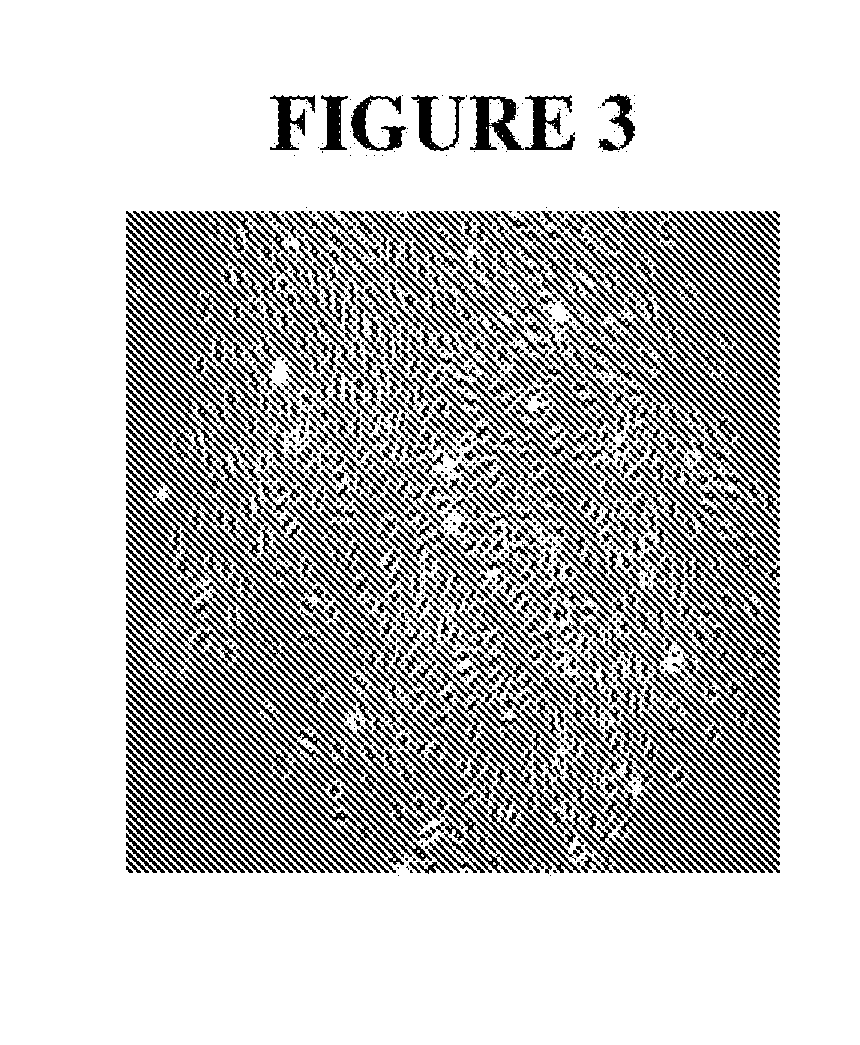A method of isolating cells for therapy and prophylaxis
a technology of endothelial progenitor cells and isolating cells, which is applied in the field of isolating endothelial progenitor cells, can solve the problems of no study reporting any impact of endothelial progenitor cell therapy on major cardiovascular outcomes, no combination of markers has produced reliable or discriminatory marker sets, etc., to improve angiogenesis or vasculogenesis, improve heart failure, and improve the effect of angiogenesis
- Summary
- Abstract
- Description
- Claims
- Application Information
AI Technical Summary
Benefits of technology
Problems solved by technology
Method used
Image
Examples
example 1
Placental Digestion and Sorting Strategy
[0337]Human term placentas were obtained from healthy pregnant mothers undergoing elective caesarean section upon informed consent as required by our approved ethics protocol. Upon collection, the decidual tissues membrane and cord were dissected and the cotyledons kept. The cotyledons were then washed in Hanks Buffered Salt Solution (HBSS) before being subjected to digestion in 1 mg / mL collagenase I, 1 mg / mL Dnase-1 and 75 μg / mL Dispase solution for 2 hours at 37° C. Upon digestion the single cell suspension was filtered through a 100 μm sieve and spun at 750×g for 5 minutes. The supernatant was poured off and subsequent cell pellet resuspended in a red cell lysis buffer and incubated at room temperature for 10 minutes. The suspension was then spun at 510×g for 5 minutes. The supernatant was then poured off and cell pellet washed in HBSS and re-spun at 510×g for 5 minutes. Cells were resuspended in ice cold MACS buffer (phosphate buffered sol...
example 2
Flow Sorting Strategy
[0338]Through flow cytometry only CD34+ cells were gated, to remove any contaminating CD45+ cells. CD34+ gated cells were then analyzed for their CD31 level of expression against the isotype matched control. (FIG. 2). The mean fluorescence intensity of CD31 staining for each CD45−CD34+ subpopulation, in a single illustrative experiment, is shown in Table 2.
TABLE 2Cell population amongMean fluorescence intensity ofCD45−CD45+CD31 stainingCD31−4.5CD31lo / −42CD31hi868HUVEC control cells873
[0339]Notably, the mean fluorescence intensity that is observed for the HUVEC control cell line (characterized as being CD31hi) is around 873. This is consistent with that observed for CD31hi CD45−CD34+ cells. Accordingly, cells that are CD31hi have around a 22-fold higher mean fluorescence intensity than CD31lo / − cells.
[0340]Cells that were CD34+CD31lo / − were then sorted directly into 100% fetal bovine serum (FBS) and directly placed on ice. Cells were then spun and resuspended in ...
example 3
Colony Forming Capacity
[0341]We are able to isolate significantly more ECFC with high proliferative potential (1-1PP-ECFC) using our claimed method in comparison to cord blood (FIG. 3). Colonies are counted following 10 days of in vitro culture.
[0342]Using the well-described ECFC assay, cells were maintained in EGM-2 (10% FBS) with medium changed every 2 days for a period of 14 days. At day 10 HPP-ECFC were counted and compared with HPP-ECFC colonies obtained from cord blood. Colonies with more than 50 cells in the colony were regarded as being HPP-ECFC.
PUM
| Property | Measurement | Unit |
|---|---|---|
| length | aaaaa | aaaaa |
| length | aaaaa | aaaaa |
| weight | aaaaa | aaaaa |
Abstract
Description
Claims
Application Information
 Login to View More
Login to View More - R&D
- Intellectual Property
- Life Sciences
- Materials
- Tech Scout
- Unparalleled Data Quality
- Higher Quality Content
- 60% Fewer Hallucinations
Browse by: Latest US Patents, China's latest patents, Technical Efficacy Thesaurus, Application Domain, Technology Topic, Popular Technical Reports.
© 2025 PatSnap. All rights reserved.Legal|Privacy policy|Modern Slavery Act Transparency Statement|Sitemap|About US| Contact US: help@patsnap.com



